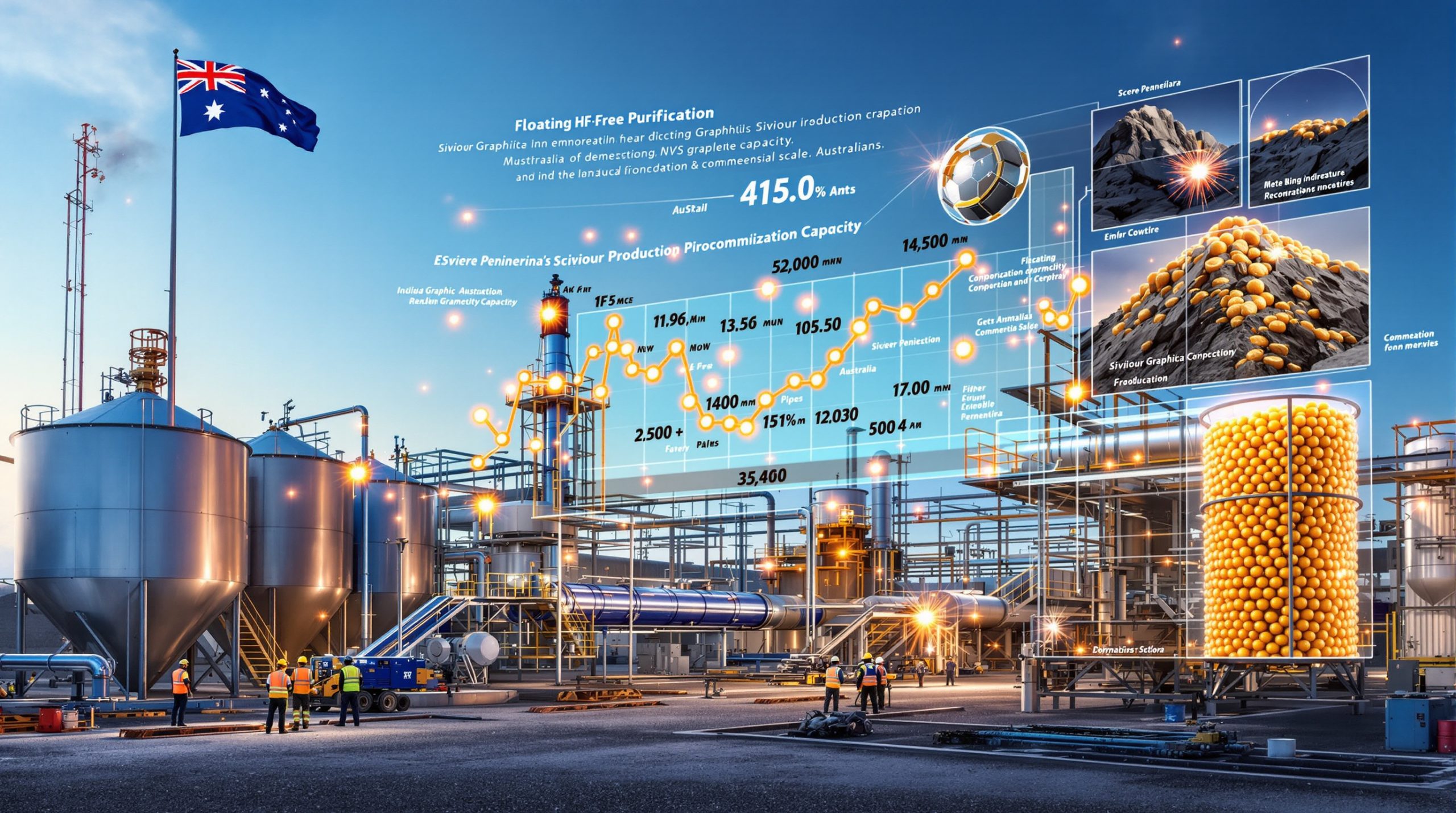What Are Rare Earth Elements and Why Do They Matter?
Rare earth elements (REEs) represent a group of 17 metallic elements that, despite their name, are relatively abundant in the Earth’s crust. What makes them “rare” isn’t their scarcity but the complexity involved in finding them in concentrations economically viable for extraction and processing.
The 17 Critical Minerals Powering Modern Technology
The rare earth family comprises 15 lanthanides (lanthanum, cerium, praseodymium, neodymium, promethium, samarium, europium, gadolinium, terbium, dysprosium, holmium, erbium, thulium, ytterbium, and lutetium) plus scandium and yttrium. These elements possess unique magnetic, luminescent, and electrochemical properties that make them indispensable in modern technology.
REEs serve as critical components in a vast array of applications:
- Consumer Electronics: Smartphones, tablets, and laptops rely on rare earths for vibration motors, speakers, and display technologies
- Clean Energy Technologies: Wind turbines require up to 600kg of rare earth elements per megawatt capacity
- Electric Vehicles: Each EV contains approximately 1-2kg of rare earth permanent magnets in motors and generators
- Defense Systems: Precision-guided munitions, radar systems, and night vision equipment depend on these elements
- Medical Technology: MRI machines utilize rare earth magnets for imaging clarity
Their irreplaceability in high-performance applications makes rare earths strategically vital for both economic competitiveness and national security.
The Global Supply Chain Vulnerability
The global rare earth supply chain faces a critical vulnerability—overwhelming dependence on a single source. China controls approximately 70% of global rare earth mining and an estimated 85% of the processing capacity required to transform raw materials into usable components.
This concentration creates multifaceted risks:
“China’s rare earth dominance represents perhaps the most concentrated control of a critical resource in the modern industrial era, creating asymmetric leverage that extends far beyond typical trade commodities.” – Mining Industry Association report, 2023
Supply chain bottlenecks emerge at multiple points:
- Extraction: Limited mining operations outside China
- Processing: Near-monopoly on separation and refinement technologies
- Manufacturing: Integrated production of components and end products
- Environmental Standards: Uneven regulatory requirements creating cost disparities
For technology-dependent nations, this supply chain vulnerability translates directly into strategic weakness. The increasing digitalization of infrastructure, transportation, and defense systems only magnifies the potential consequences of supply disruptions.
How Did China Establish Its Rare Earth Dominance?
China’s commanding position in the global rare earth market didn’t happen by accident. It represents the culmination of decades of strategic planning, sustained investment, and determined execution.
Beijing’s Long-Term Investment Strategy
China’s rare earth ascendancy began in the 1980s when Deng Xiaoping famously declared, “The Middle East has oil, China has rare earths.” This statement wasn’t merely observational—it launched a comprehensive national strategy.
The Chinese government has systematically built its rare earth industry through:
- Research Prioritization: Establishing dedicated rare earth research institutes and university programs
- Talent Development: Training generations of specialized metallurgists and engineers
- Infrastructure Investment: Building processing facilities with state backing
- Vertical Integration: Creating end-to-end supply chains from mining to manufacturing
“China is expected to maintain a strategic edge over the United States in the rare earth industry, thanks to Beijing’s long-term investments in advanced mining and processing technologies,” notes a July 2025 report from Strategy Risks, a New York-based business intelligence firm.
This patient approach contrasts sharply with the short-term thinking that has characterized Western approaches to critical minerals energy transition. While other nations treated rare earths as ordinary commodities subject to market forces, China recognized their strategic value and acted accordingly.
The Competitive Advantage of Integrated Supply Chains
China’s dominance extends beyond simply mining more material. The country has created an integrated ecosystem that encompasses:
- Mining Operations: Extensive extraction facilities in Inner Mongolia and southern provinces
- Separation Facilities: Complex chemical processing plants for isolating individual elements
- Magnet Production: Manufacturing of neodymium-iron-boron (NdFeB) permanent magnets
- Component Manufacturing: Production of motors, sensors, and other rare earth-dependent parts
- End-Product Assembly: Final integration into consumer and industrial goods
This vertical integration creates substantial cost advantages through:
- Scale Economies: Large processing volumes reducing per-unit costs
- Knowledge Concentration: Expertise accumulation improving yields and reducing waste
- Reduced Transportation: Minimized logistics between production stages
- State Support: Subsidized energy, infrastructure, and financing
Environmental regulatory differences have further tilted the playing field. Processing rare earths creates significant waste, including radioactive byproducts from thorium and uranium typically found alongside rare earth deposits. China’s historically less stringent environmental standards created a cost advantage that helped cement its market position, though environmental practices have improved in recent years.
What Makes Rare Earths a Powerful Geopolitical Tool?
The concentration of rare earth supply creates more than economic leverage—it provides China with a powerful geopolitical instrument that can be deployed selectively to achieve strategic objectives.
The Strategic Leverage in Trade Negotiations
China has demonstrated both the willingness and capability to use rare earth supply as diplomatic leverage. According to a July 2025 South China Morning Post article, “Beijing increasingly leverages its dominance in the global rare earth supply chain – particularly during recent trade negotiations with the Trump administration.”
The same report notes that “The critical minerals became a powerful bargaining chip for China to push back against Washington’s tech restrictions,” highlighting how control of these resources provides asymmetric advantages in broader negotiations.
This leverage was most recently demonstrated in the London agreement of June 2025, which “laid the groundwork for both sides to ease curbs.” This agreement highlights how rare earth access has become intertwined with broader technology and trade discussions.
Historical precedents suggest this isn’t a new approach:
- 2010 Dispute with Japan: Following a territorial disagreement, China restricted rare earth exports to Japan, causing price spikes and supply concerns
- 2019-2020 Trade War Positioning: During US-China trade tensions, China signaled potential rare earth export restrictions
- 2023 Export Controls: New licensing requirements for certain rare earth exports created targeted pressure
These actions demonstrate the strategic value of supply chain control beyond simple market economics.
Military Applications and National Security Concerns
The defense implications of rare earth dependency create particularly acute vulnerabilities. Modern military systems rely extensively on these materials:
- Precision Guidance Systems: Rare earth magnets enable miniaturized motors in guided munitions
- Radar Technology: Advanced radar depends on rare earth elements for signal amplification
- Night Vision Equipment: Phosphors containing rare earths convert infrared to visible light
- Laser Targeting: Rare earth dopants create specific wavelengths needed for targeting systems
- Communication Systems: Satellite and secure communications utilize rare earth components
For defense planners, this dependency creates unacceptable risk. A Department of Defense assessment concluded that rare earth supply vulnerabilities represent “a single point of failure that could compromise multiple weapons platforms simultaneously.”
Nations have responded with strategic stockpiling efforts, though these provide only temporary insurance against supply disruptions. The U.S. National Defense Stockpile, Japan’s JOGMEC reserves, and European initiatives all represent attempts to mitigate immediate supply risks while longer-term solutions develop.
Disclaimer: Military applications information is based on publicly available sources and may not reflect classified capabilities or dependencies.
Why Has the US Struggled to Compete in the Rare Earth Sector?
America’s current rare earth vulnerability stems from a complex interplay of policy choices, economic factors, and strategic miscalculations spanning decades.
Decades of Underinvestment and Policy Failures
The United States once led the world in rare earth production, with the Mountain Pass mine in California supplying the majority of global demand until the 1990s. The subsequent decline reflects systematic failures:
“The US is paying the price for decades of underinvestment, obsolete policies and the absence of a coherent strategy,” according to the Strategy Risks report cited by the South China Morning Post in July 2025.
This decline followed a predictable pattern:
- Regulatory Cost Increases: Environmental regulations raised domestic production costs
- Market Prioritization: Short-term financial considerations outweighed strategic planning
- Knowledge Erosion: Technical expertise and processing capabilities atrophied
- Infrastructure Decay: Processing facilities closed or became obsolete
- Supply Chain Fragmentation: Vertical integration advantages were lost
The policy environment further complicated recovery efforts. Mining permits in the United States typically take 7-10 years to secure, compared to 2-3 years in Canada and Australia. This regulatory timeline creates significant barriers to new project development, even when economic conditions might otherwise support investment.
The absence of a coherent national minerals strategy left the rare earth sector to market forces, without recognizing the strategic implications of dependency on a geopolitical competitor.
Resource Limitations and Processing Bottlenecks
While the United States does possess significant rare earth deposits, extracting and processing these resources presents substantial challenges:
- Geological Distribution: U.S. deposits often contain different proportions of individual rare earths than Chinese sources
- Lower Concentrations: Many potential U.S. sources have lower ore grades, requiring more processing
- Processing Complexity: Separating individual rare earths requires sophisticated chemical processes
- Technical Expertise Gap: Diminished domestic knowledge base for processing techniques
- Downstream Manufacturing: Limited domestic capacity for converting processed materials into components
“America remains dependent on imported minerals from China, due to a comparative lack of raw mineral deposits and government investments,” notes the Strategy Risks report cited by SCMP.
The processing bottleneck represents a particularly challenging obstacle. Even when rare earth oxides are mined domestically, they typically must be sent to China for separation into individual elements and conversion into usable forms. This dependency maintains vulnerability even when mining operations exist locally.
Economic viability remains challenging for domestic operations. Chinese operations benefit from economies of scale, established infrastructure, and integrated supply chains that create cost advantages difficult for new entrants to overcome without supportive policy frameworks.
What Efforts Are Being Made to Break China’s Monopoly?
Recognizing the strategic vulnerability created by rare earth dependency, various nations and private enterprises have launched initiatives to diversify the global supply chain.
Current US Initiatives to Reduce Dependency
The United States has begun addressing its rare earth vulnerability through a multi-faceted approach. According to the Strategy Risks report from July 2025, “the US is addressing its vulnerabilities in this sector through initiatives intended to strengthen production and materials processing.”
These efforts include:
- Legislative Support: Recent bills providing funding for domestic rare earth development
- Defense Production Act: Authorizing investment in critical mineral projects deemed essential for national security
- Research Funding: Grants for developing improved extraction and separation technologies
- Loan Guarantees: Financial support reducing investment risk for private mining operations
- Permitting Reform: Efforts to streamline regulatory approvals for strategic mineral projects
Public-private partnerships have emerged as a crucial component of this strategy. Projects like the reopened Mountain Pass mine in California demonstrate the potential for revival when government policy supports private investment.
However, progress remains slow and fragmented. The report notes that “Despite growing US efforts to close the gap… America remains dependent,” highlighting the challenge of overcoming decades of neglect.
Timeline projections suggest meaningful supply chain diversification will require sustained commitment over 5-10 years, with full independence likely unachievable in the near term. Furthermore, the implementation of US critical minerals tariffs has added another layer of complexity to the global supply chain dynamics.
Global Diversification Strategies
Efforts to reduce China’s rare earth dominance extend beyond the United States, with several nations pursuing strategic initiatives:
Australia has positioned itself as a potential alternative supplier, leveraging its substantial deposits and established mining expertise. Key projects include:
- Lynas Corporation’s integrated mining and processing operations
- Northern Minerals’ development of heavy rare earth resources
- Australian government’s Critical Minerals Strategy supporting sector development
Canada has designated rare earths as critical minerals and is developing projects in Saskatchewan, Northwest Territories, and Quebec. The Canadian approach emphasizes environmentally responsible extraction and processing.
Japan, following supply disruptions in 2010, has pursued a comprehensive strategy including:
- Long-term supply agreements with Australian producers
- Investments in recycling technologies for urban mining
- Research into alternative materials that reduce rare earth requirements
- Strategic stockpiling to buffer against future disruptions
The European Union has launched the European Raw Materials Alliance (ERMA) to address critical mineral vulnerabilities, focusing on developing domestic resources while establishing partnerships with reliable suppliers outside China. The establishment of a European CRM facility represents a significant step towards reducing dependency on Chinese rare earth supplies.
These global efforts create potential for a more resilient supply network, though full implementation will require years of sustained investment and development.
How Might the Rare Earth Supply Chain Evolve in the Next Decade?
The rare earth landscape is likely to undergo significant transformation in the coming decade, driven by technological innovation, shifting geopolitical priorities, and evolving market demands.
Technological Innovations and Alternatives
Several technological approaches show promise for reducing rare earth vulnerability:
Recycling and Urban Mining
The growing volume of discarded electronics creates an increasingly viable “urban mine” of rare earth materials. Current recovery rates for rare earths from electronic waste remain low—typically under 1% globally—but improving technologies are changing the equation:
- Advanced separation processes can now recover up to 90% of rare earths from certain components
- Automated disassembly systems reduce labor costs for recycling operations
- Innovative chemical processes minimize waste and environmental impact
For perspective, a single recycling facility processing 10,000 tons of electronic waste annually could potentially recover rare earth quantities equivalent to a small mining operation. Recent advancements in battery recycling breakthrough technologies further highlight the potential of urban mining to contribute to rare earth supply chains.
Materials Research and Substitution
Research into alternative materials that reduce or eliminate rare earth requirements continues to advance:
- Iron-nitride magnets show potential to replace some neodymium magnets
- Ceramic alternatives for certain electronic components reduce dysprosium requirements
- New motor designs can function effectively with lower rare earth content
While perfect substitutes remain elusive for many applications, incremental improvements continue to reduce dependency for specific uses.
Efficiency Improvements
Technological advancements are reducing the quantity of rare earths required for equivalent performance:
- Motor designs requiring 20-30% less neodymium for equivalent power
- More precise manufacturing techniques reducing waste during component production
- Extended product lifecycles spreading material requirements over longer periods
These approaches collectively reduce pressure on primary supply chains without requiring complete substitution.
Reshaping of Global Supply Networks
The global rare earth landscape is likely to evolve toward a more diversified, though still complex, structure:
Emerging Production Hubs
Several regions are positioned to gain significance in rare earth supply:
- Australia’s processing capacity is projected to handle up to 10% of global demand by 2030
- Canada’s northern territories contain substantial deposits entering development
- Brazil and Vietnam possess significant resources that remain largely undeveloped
- African nations including South Africa and Tanzania have identified promising deposits
Understanding the rare earth reserves breakdown by country provides crucial insight into potential future supply dynamics.
New Processing Infrastructure
Processing capacity outside China is gradually expanding:
- US facilities under development in Texas and California
- European processing plants planned in Estonia and Norway
- Australian integrated operations expanding separation capabilities
- Japanese investments in Malaysian processing facilities
Timeline for Meaningful Diversification
Realistic assessment suggests the following timeline:
- 2025-2027: Initial processing capacity established outside China, handling 10-15% of global demand
- 2028-2030: Secondary suppliers reach commercial scale, expanding to 20-25% of market
- 2030-2035: Maturation of alternative supply chains, potentially reaching 30-40% of global capacity
However, China’s established infrastructure, technical expertise, and integrated supply chains ensure it will remain the dominant player even as alternatives develop.
The most likely outcome is a more balanced ecosystem rather than a complete restructuring, with China maintaining leadership while other sources provide supply chain resilience for critical applications.
FAQ: Understanding Rare Earth Elements and Global Supply Chains
What makes rare earth processing environmentally challenging?
Rare earth processing presents several significant environmental challenges:
Radioactive Waste Management
Most rare earth deposits contain thorium and uranium, which become concentrated during processing. Managing this radioactive waste requires specialized containment and monitoring systems. In some operations, particularly those with less stringent oversight, improper handling has led to soil and groundwater contamination.
Chemical Intensity
The separation process for rare earths typically involves:
- Strong acids for leaching elements from ore
- Organic solvents for separation processes
- Ammonia-based chemicals for precipitation
- Multiple washing and filtering stages generating contaminated wastewater
A typical processing facility handling 10,000 tons of rare earth concentrate annually may use
Ready to Capitalise on the Next Rare Earth Discovery?
Discover significant ASX rare earth announcements instantly with Discovery Alert’s proprietary Discovery IQ model, which transforms complex mineral data into actionable insights for informed investment decisions. Explore why major mineral discoveries can lead to substantial market returns by visiting Discovery Alert’s dedicated discoveries page.




